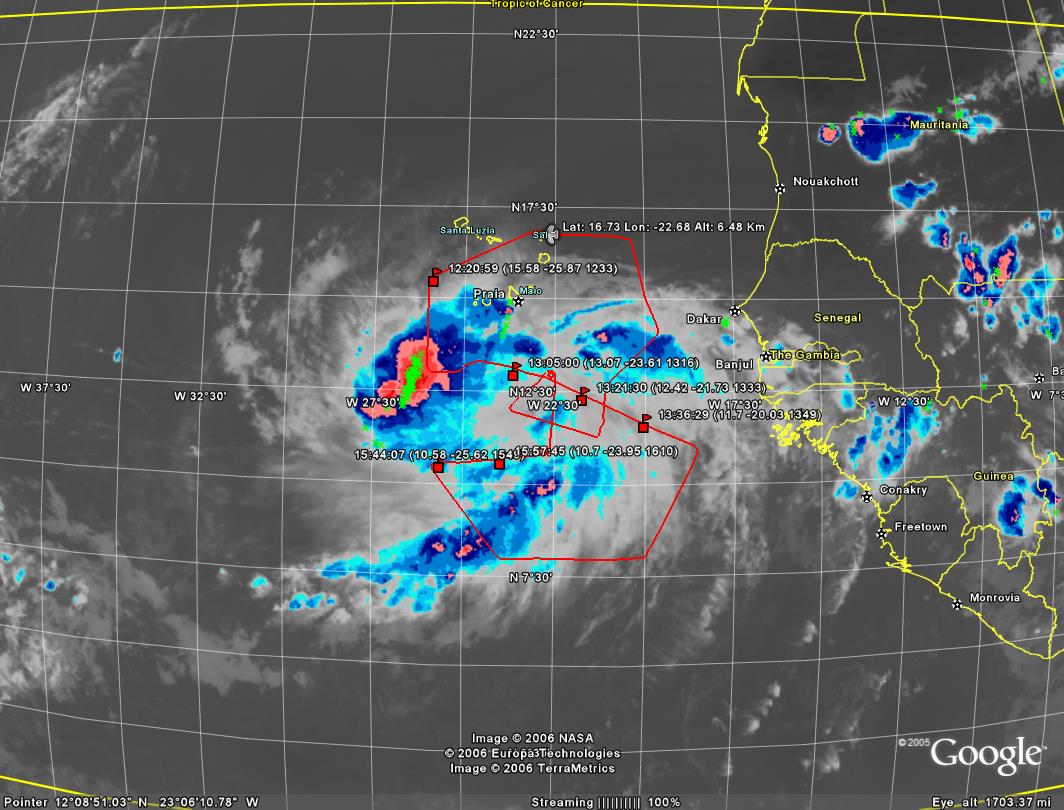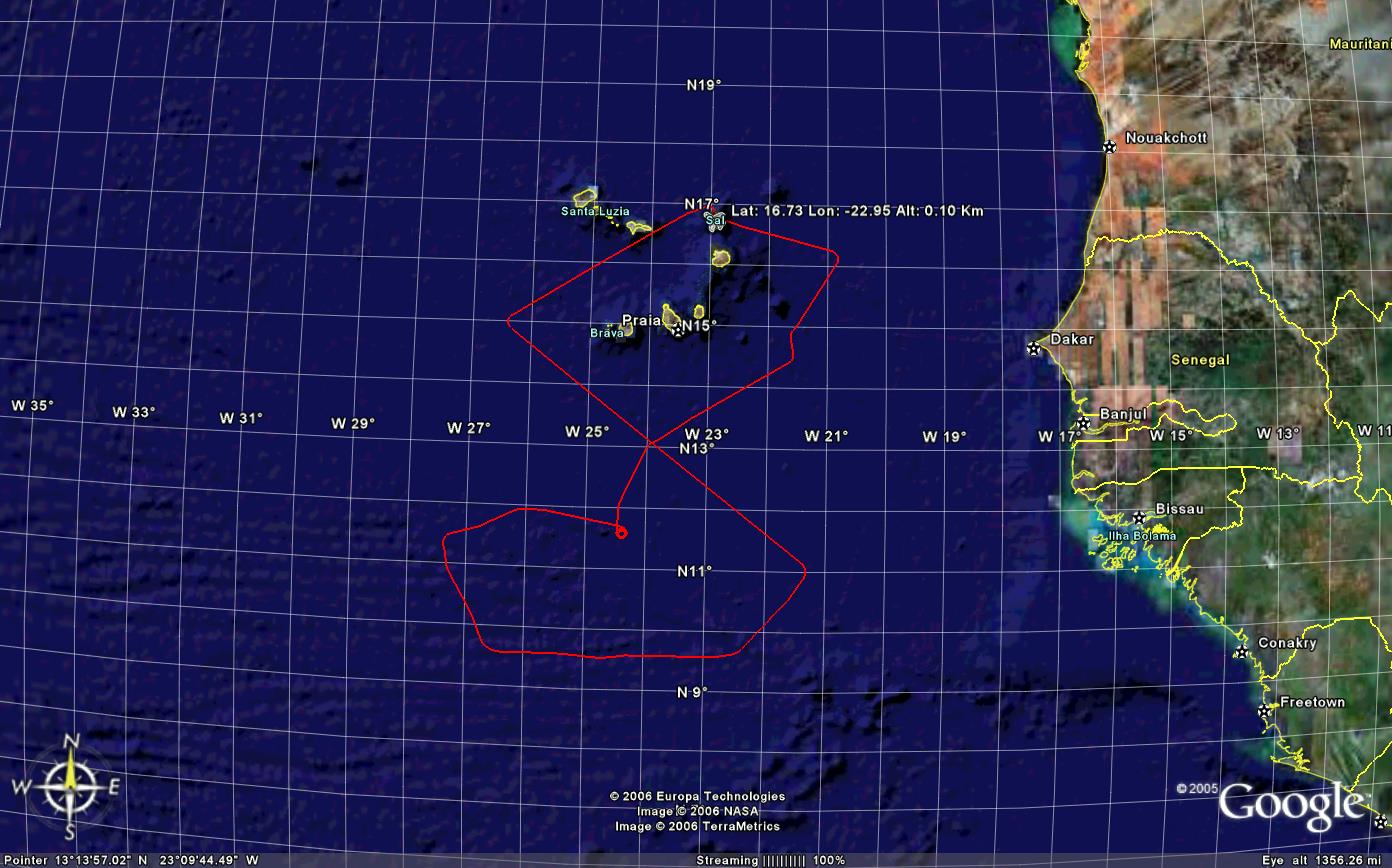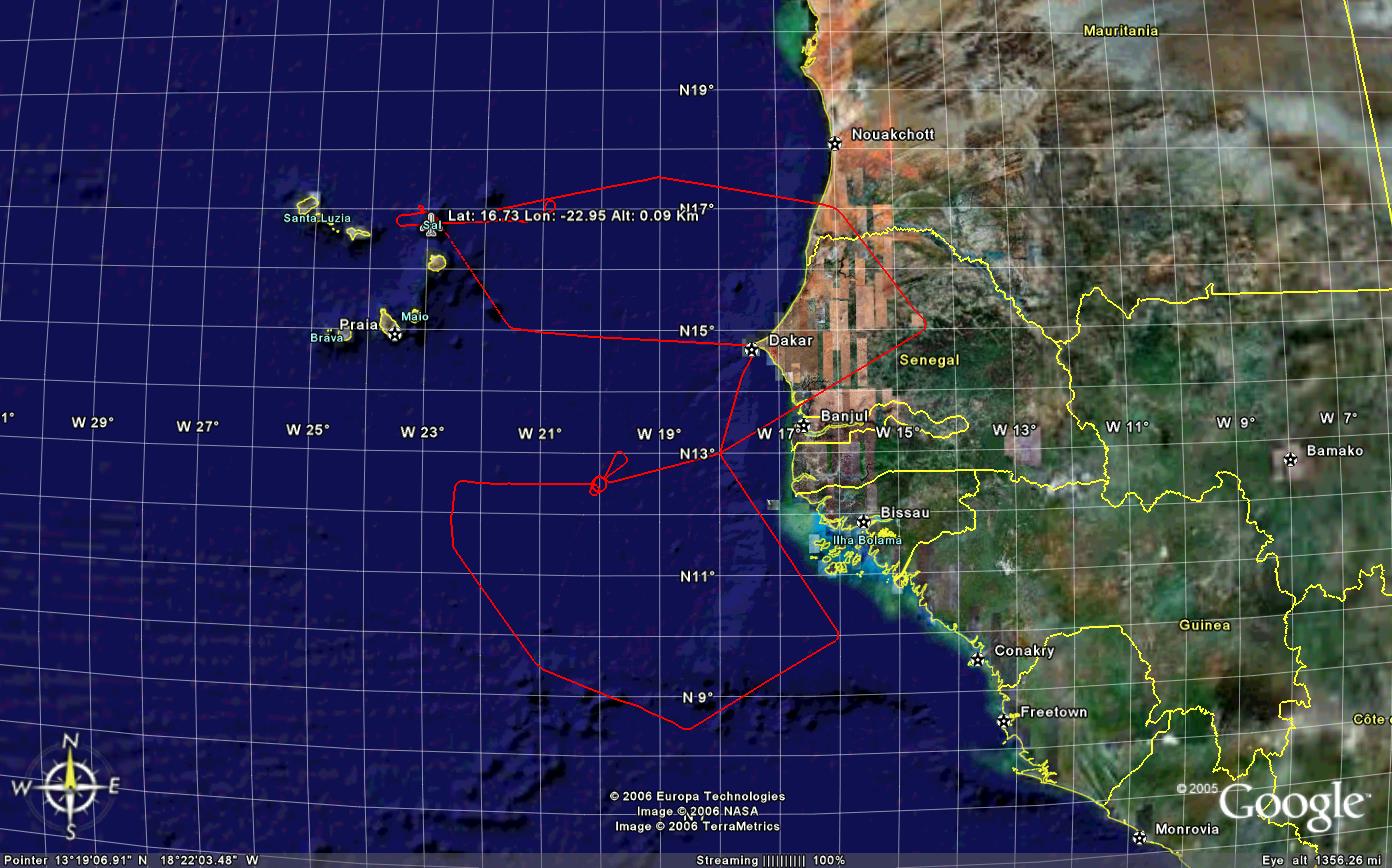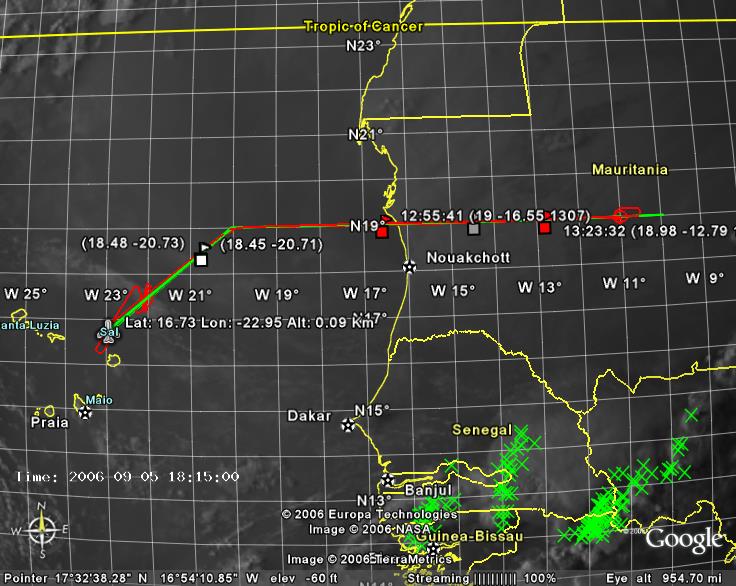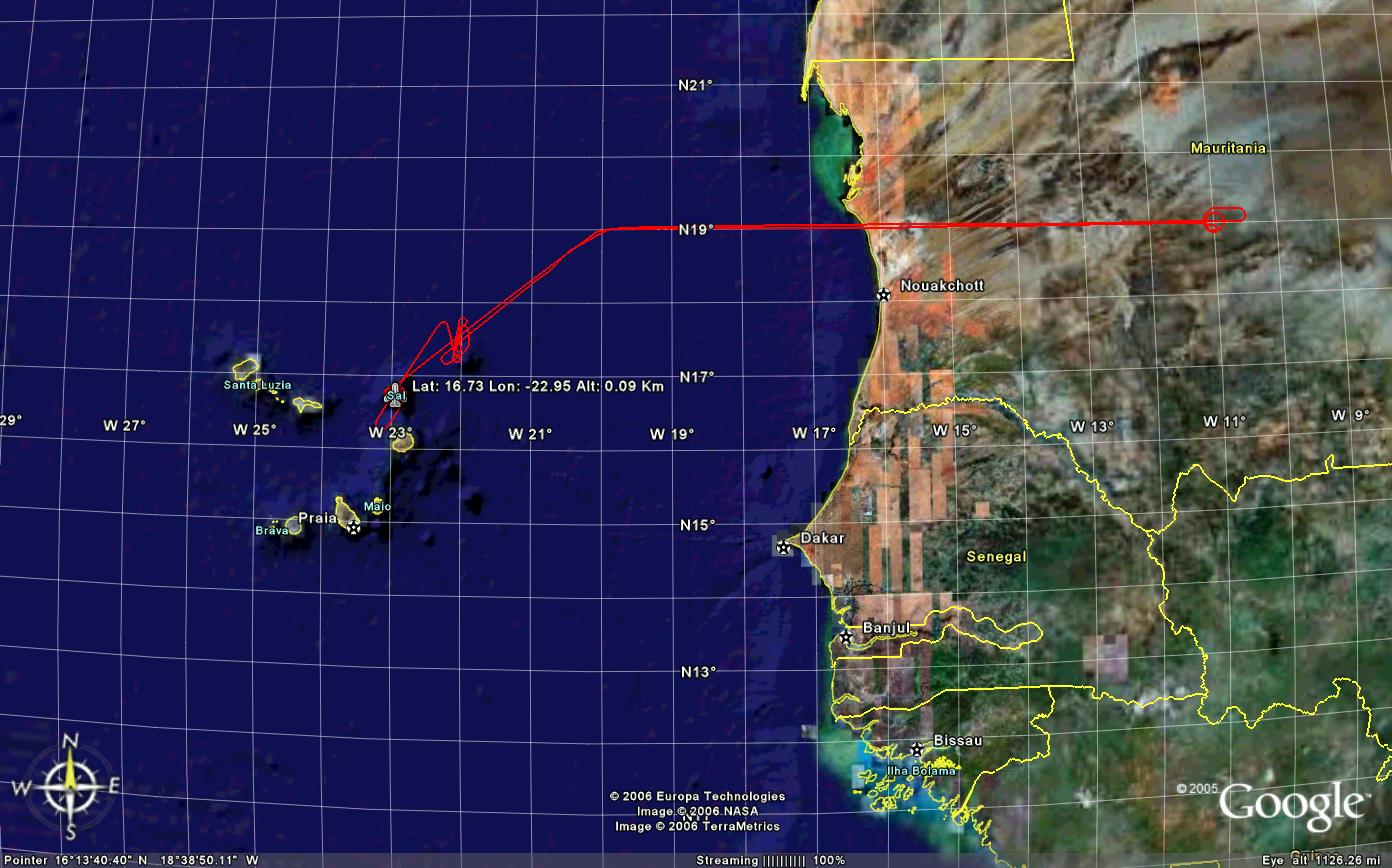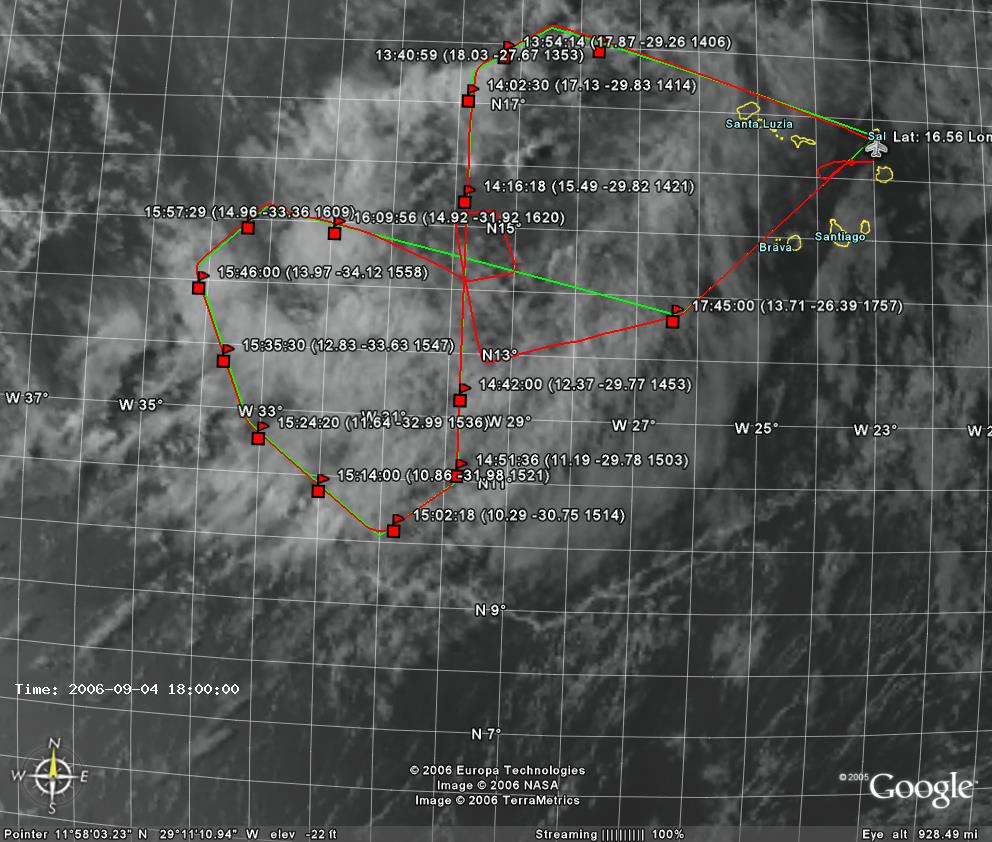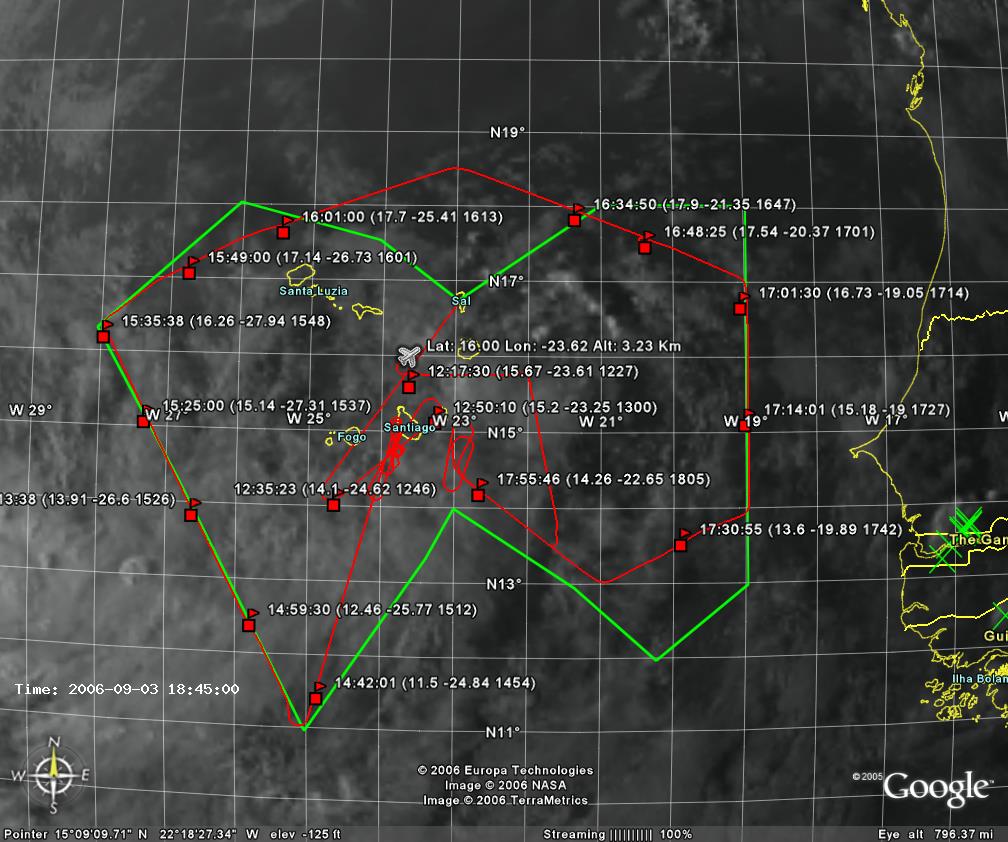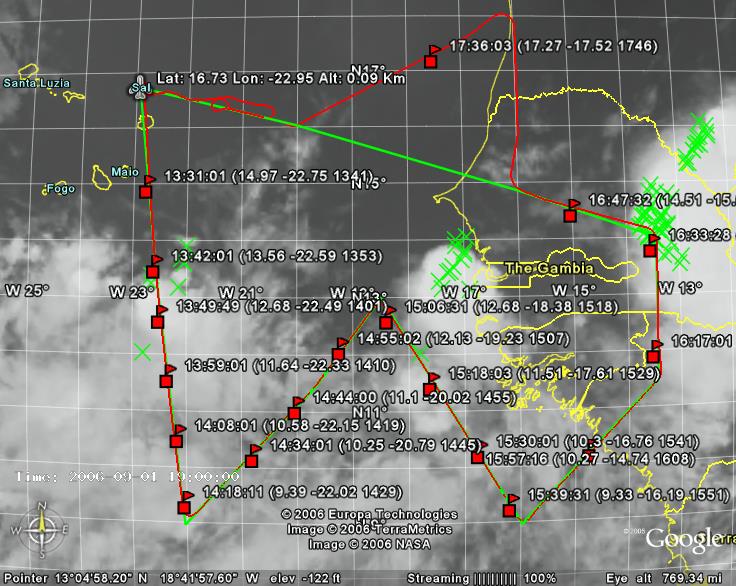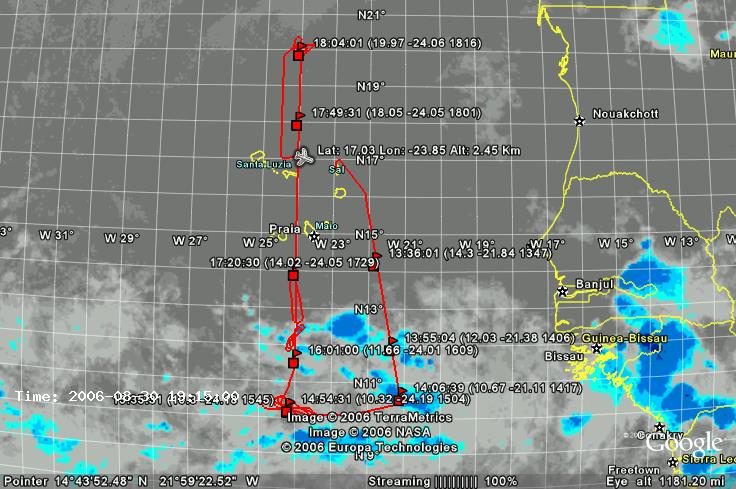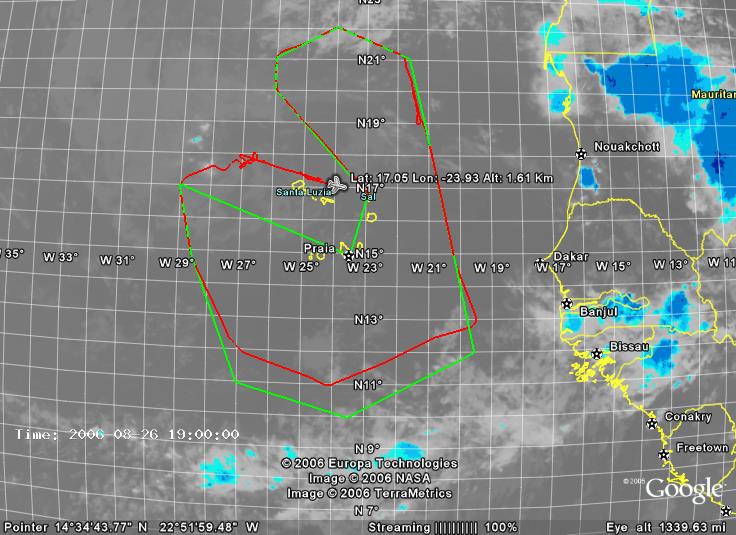Flight Hours by Mission Objective
October 5th, 2006
| Date | East. Wave # | Cyclogenesis | SAL/Dust | Microphysics | Total | |||
| Useful | Dedicated | Useful | Dedicated | Useful | Dedicated | |||
| 15-Aug-06 | Ferry to CV | 1 | 0.5 | 1 | 0.5 | 0 | 0 | 1 |
| 19-Aug-06 | w1 – pre-Ernesto | 6.5 | 4.5 | 4 | 2 | 0.5 | 0 | 6.5 |
| 20-Aug-06 | w1 – pre-Ernesto | 6 | 3 | 6 | 3 | 2 | 2 | 8 |
| 23-Aug-06 | w2 – TS Debby | 8 | 8 | 6 | 0 | 0.5 | 0 | 8 |
| 25-Aug-06 | w3 – non develop. | 5.5 | 3.5 | 5 | 4 | 1 | 0 | 7.5 |
| 26-Aug-06 | w3 – non develop. | 7 | 4.5 | 5 | 0 | 2.5 | 2.5 | 7 |
| 30-Aug-06 | no wave | 0 | 0 | 5 | 2 | 5 | 5 | 7 |
| 1-Sep-06 | w4 – non develop. | 5.5 | 5.5 | 2 | 0.5 | 0 | 0 | 6 |
| 3-Sep-06 | w5 – pre-Gordon | 6 | 6 | 0 | 0 | 1.5 | 1.5 | 7.5 |
| 4-Sep-06 | w5 – pre-Gordon | 5.5 | 5.5 | 3 | 0 | 0 | 0 | 5.5 |
| 5-Sep-06 | no wave | 0 | 0 | 6 | 5.5 | 1 | 0.5 | 6 |
| 8-Sep-06 | w6 – non develop. | 6 | 6 | 0.5 | 0.5 | 0.5 | 0.5 | 7 |
| 9-Sep-06 | w6 – non develop. | 5 | 5 | 0 | 0 | 0 | 0 | 5 |
| 12-Sep-06 | w7 - TD8 became H. Helene | 7 | 7 | 0.5 | 0.5 | 0.5 | 0.5 | 8 |
| 14-Sep-06 | Ferry to US | 0 | 0 | 0 | 0 | 0 | 0 | 0 |
| Total (dedicated) hours | 69 | 59 | 44 | 18.5 | 15 | 12.5 | 90 | |
| Approx. Hours per A/C Plan | 56 | 17 | 17 | 90 | ||||
One caution that everyone should appreciate is that there might be some small corrections still needed on the dedicated hours, but especially on the “useful for” hours. As I think about this, I have been inconsistent in the following way: When a wave mission flies over dust layers, I usually added some “useful for dust” hours even if we did not alter the flight tracks. To be consistent, there are some portions of the wave flights when we penetrated some thick anvils or large-scale cirrus/altostratus without altering the flight tracks.
Obviously, the ice water contents and ice particle size distributions on those segments will be useful to the microphysics goals, so with help of folks like Andy Heymsfield, Cindy Twohy, and Aaron Bansemer, we should make some educated guesses about the flight legs useful for such purposes
–Ed Zipser
P.S. An Excel file with these totals is uploaded to this report (see below)



